by Briscoe White | Dec 9, 2011 | Gardening, Growing, Herbs, Life on the Farm |
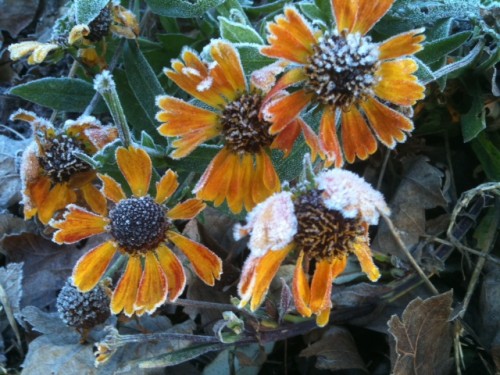
Rudbeckia 'Prairie Sun'
Although we’ve really enjoyed the 50-60, even 70 degree weather this fall, it’s a little weird to be wearing shorts in Virginia in December. Last night was one of the first real reminders of what we’re in for this winter, a hard frost. Though scraping your windshields in the morning can be quite a pain, the delicate, cold crystals really made our herb test garden glitter this morning. So, good bye short sleeves and screen doors, we’ll pack you away until mid March. Hello, long johns and indoor herb gardening!
Here are a few pictures of our garden this morning, all covered in frost. It was quite a beautiful sight!
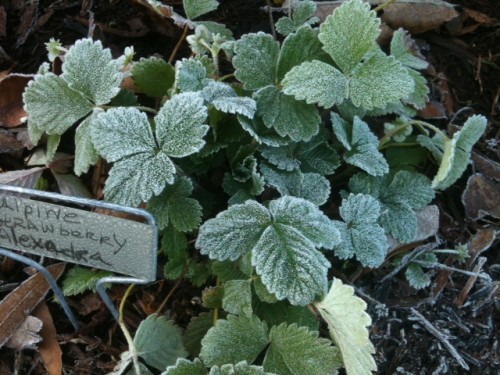
Alpine Strawberry
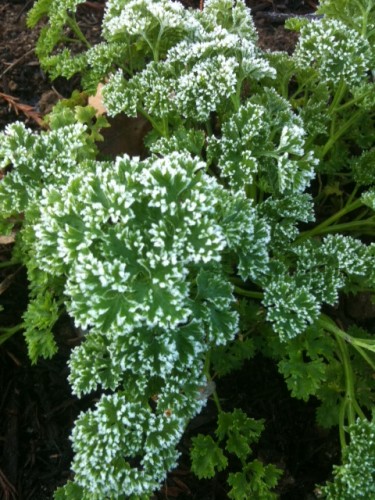
'Curly' Parsley
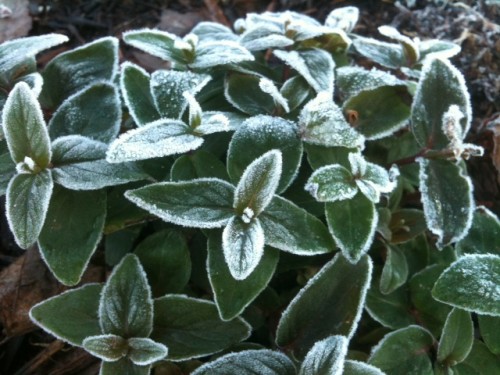
Mountain Mint
by Briscoe White | Dec 1, 2011 | Flowers, Gardening, Growing, Herbs, Life on the Farm |
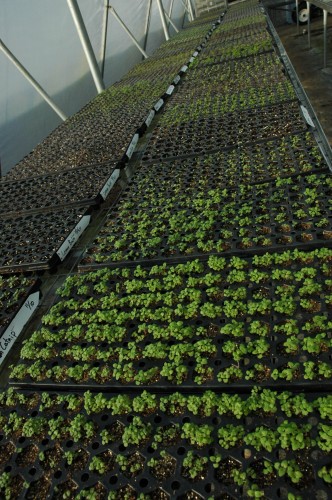
While everyone is running around finishing holiday shopping, we’re busier than Santa’s elves in our greenhouse. Introducing a few new techniques and tricks of the trade, we’ve been hard at work planting and preparing our herbs and flowers for their debut this spring. Hand-planted and all grown in our greenhouse, we get to know the different personalities of these plants like old friends. For instance,we know that though aromatic and beautiful, Lavender can be cranky about too much water. Or that Horehound, a medicinal herb and cousin to Mint, is easy going and grows quickly. Knowing our plants from the time they germinate allows us to have the best quality control over what we sell, and we have high standards for our plants because if we wouldn’t want it in our own garden, we won’t ship it. This is the benefit to a family-owned nursery versus a big box store or corporate grower. We care about the plants we grow. Like an anxious, proud papa, I eagerly check the germination chamber constantly each week to see if any “due dates” have arrived early.
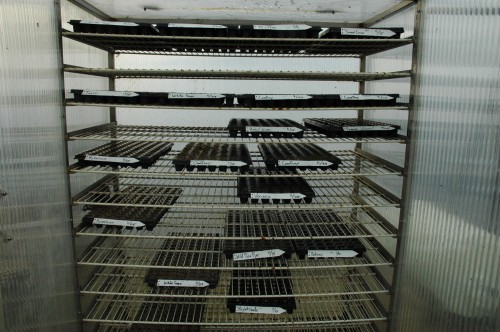
Looks like some of the first Betony seeds are beginning to sprout!
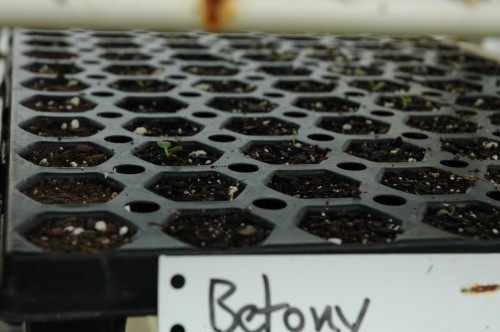
Stay posted for more pictures and news on how your favorite herbs and flowers are growing! You can actually watch the progress of your order, from their inception in our greenhouse, to their maturity in your garden. Order these babies now and reserve yours for spring shipping, because the early bird does get the worm!
by Briscoe White | Nov 22, 2011 | Herbs, Life on the Farm |
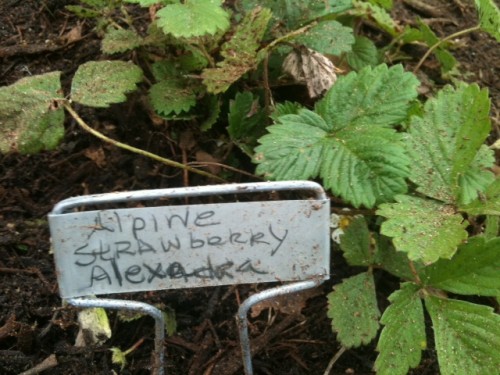
A great way to add personality to your garden (and help you recall what you planted!) is to label your plants with plant markers. Whether you prefer common names, Latin names, their uses (potpourris, teas, plants that attract specific butterflies, etc) or labeling by types of cuisine, plant markers are a terrific way to keep track of your plants and educate visitors who may stroll through your gardens.
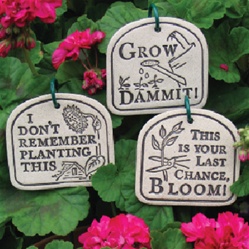
Try showing your humorous side with some of our Stone Plant Tags, and we promise you’ll get a good giggle each time you garden.
We’re finishing our test garden this week as we tidy up for Thanksgiving. After planting so many different types of herbs throughout our landscape, it can be enough to make your head spin! Labeling our herbs gives us a reminder of which varieties we have, making it much easier to run out and snip a few sprigs of Lavender for craft making or Lemon Thyme for our Thyme For Cupcakes recipe! For a great gift for the gardener in your life, try our stylish set of six Slate Garden Markers or our decorative Copper Hang Tags for a more rustic feel.
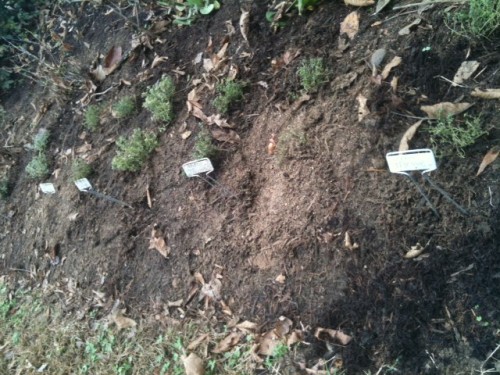
Stay tuned for more news from our test garden, as we showcase our favorite herb plants!
by Briscoe White | Feb 25, 2011 | Flowers, Inspiration, Life on the Farm, Miscellaneous |

With temperatures fluctuating between 70 degree sunny days and 40 degree snow flurries, we can be sure that springtime in Virginia is upon us! In spite of the cold nights, we’re having a very warm (though windy) day on the farm and decided to further document some springtime signs. If you read our previous blog “Spring Has Sprung!“, you can tell that we were very eager for warmer weather. Hopefully these telltale signs of spring mean that winter is almost done and the groundhog was actually right!
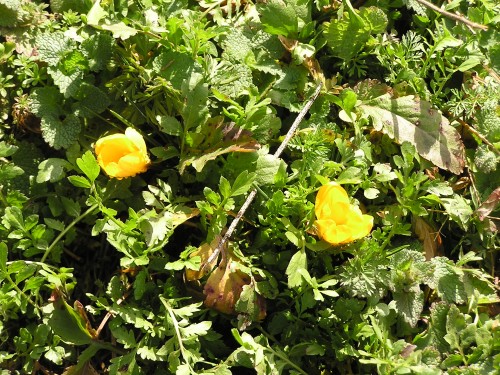
If you visit our Facebook page, you’ll even get a chance to watch some video that we took of our early spring on the farm!
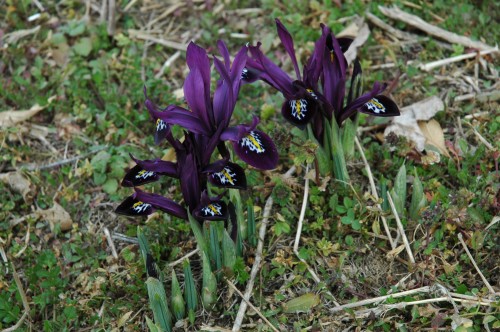
by Briscoe White | Feb 18, 2011 | Gardening, Growing, Herbs, Inspiration, Life on the Farm |
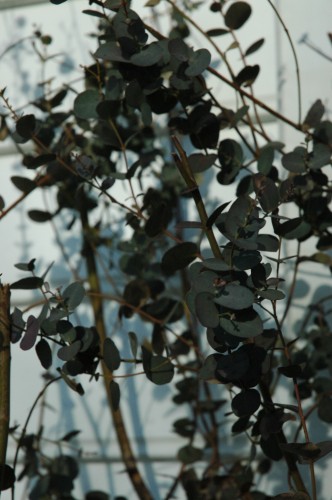
Eucalyptus plants are hardy perennials favored by many gardeners. Our favorite, the Silver Drop variety, has green leaves with a slightly dusty, or silvery, appearance. Their leaves contain highly fragrant oils, used in many medicines and perfumes. Silver Drop sprigs are a perfect addition to floral arrangements, both fresh and dried, because they hold their shape and last a long time without wilting. Considered a valuable everlasting for wreaths, crafts, and dried arrangements, its uniformly rounded leaves, erect, straight stems and elegant silvery color add depth that lasts much longer than most cut foliage.
Native to chillier zones of Tasmania, this beautiful plant is known to be remarkably cold hardy. In the states it thrives in zones 7-11 and even grows marvelously through our hot, humid summers and cold, wet winters here, in the Mid Atlantic. We can personally attest to this– we have one right here on the farm! It is in a pretty exposed area, vulnerable to harsh river winds and hard winter frosts. We’ve even over-pruned in the past few years, and this baby keeps coming back! It’s as beautiful as it is tenacious, and no matter what season, remains our most lovely landscaping shrub. We’re glad it’s here to stay.
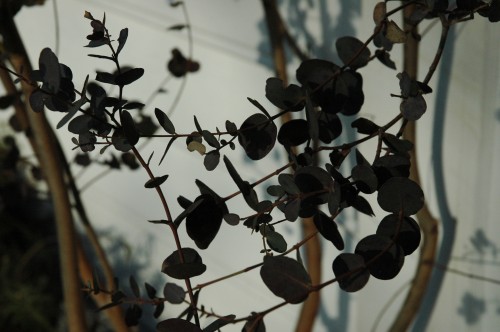
Needless to say, Eucalyptus is pretty easy to grow. Give it lots of sunshine and rich, well-drained soil. Water only when the top inch of soil feels dry to the touch. Prune in the spring, wherever you see any brown or dead foliage. And enjoy!
by Briscoe White | Feb 17, 2011 | Herbs, Life on the Farm, Miscellaneous, Wildlife |
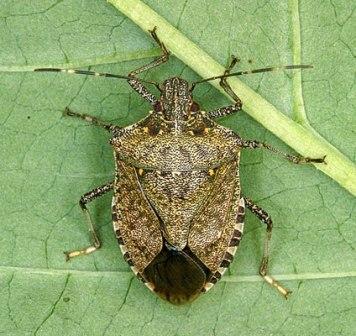
For many of us on the East Coast (particularly MD, DC and VA), this time of year not only marks the first warm weeks which hint of the coming spring season; it means to prepare for the invasion. It’s not a terrorist or nuclear threat we’re talking about…it’s something far smellier: stinkbugs. In 2010 our region suffered a swarm of these foul little pests and as we begin seeing warmer weather in this (hopefully) early spring, they are beginning to settle in like unwanted house guests.
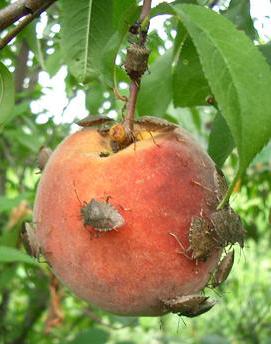
Though they don’t bite or sting, they do emit a pretty putrid odor when crushed, smooshed, vacuumed up, or squished, and though they are more of an annoyance for homeowners, local farmers are beginning to fret. Stinkbugs prey on crops like raspberries, tomatoes, peaches and other fruits, sucking the juices out of them and leaving them undesirable. Especially in the organic farming community, who strive not to use harmful pesticides, concern is on the rise. So, what is your best line of garden defense against these pungent perpetrators? The all natural answer is herbs!
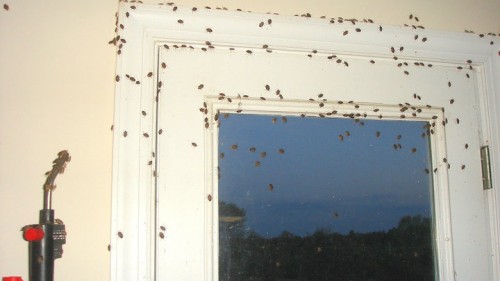
Don't let this happen to your home!
Strongly scented herbs such as Mint, Lavender, Catnip, and Patchouli have been proven to thwart the little stinkers from overwhelming you favorite fruits and veggies. (It’s hard to believe that they are picky about smells…I guess everyone likes their own brand!) You can also try planting other natural insect deterrents around your home or garden like Tansy, ‘Citronella’ Scented Geraniums, Pyrethrums and Rue to keep the bugs at bay. For the insidious insects that have already made it indoors, try making sachets with some of these herbs or use their essential oils to coat your window sills and thresholds. This will hopefully keep the rest of the stinkbugs from sneaking in and joining their friends inside your nice warm home. You can also fill jars with soapy water to catch the critters that have already begun to show up indoors, as the soap will dissolve their exoskeleton, killing them in a non-toxic way.
In conjunction with February being National Bird Feeding Month, try attracting birds to your garden with feeders, houses and baths, to keep your bug problem to a minimum. We’ve heard that blue jays are fond of these stinky little snacks, so encourage them and other seed-eating friends to nest around your yard to prevent the problem from getting out of hand. Bats also find stink bugs to be a delicacy, so place bat boxes throughout your yard and near the garden to help battle the bugs.


















